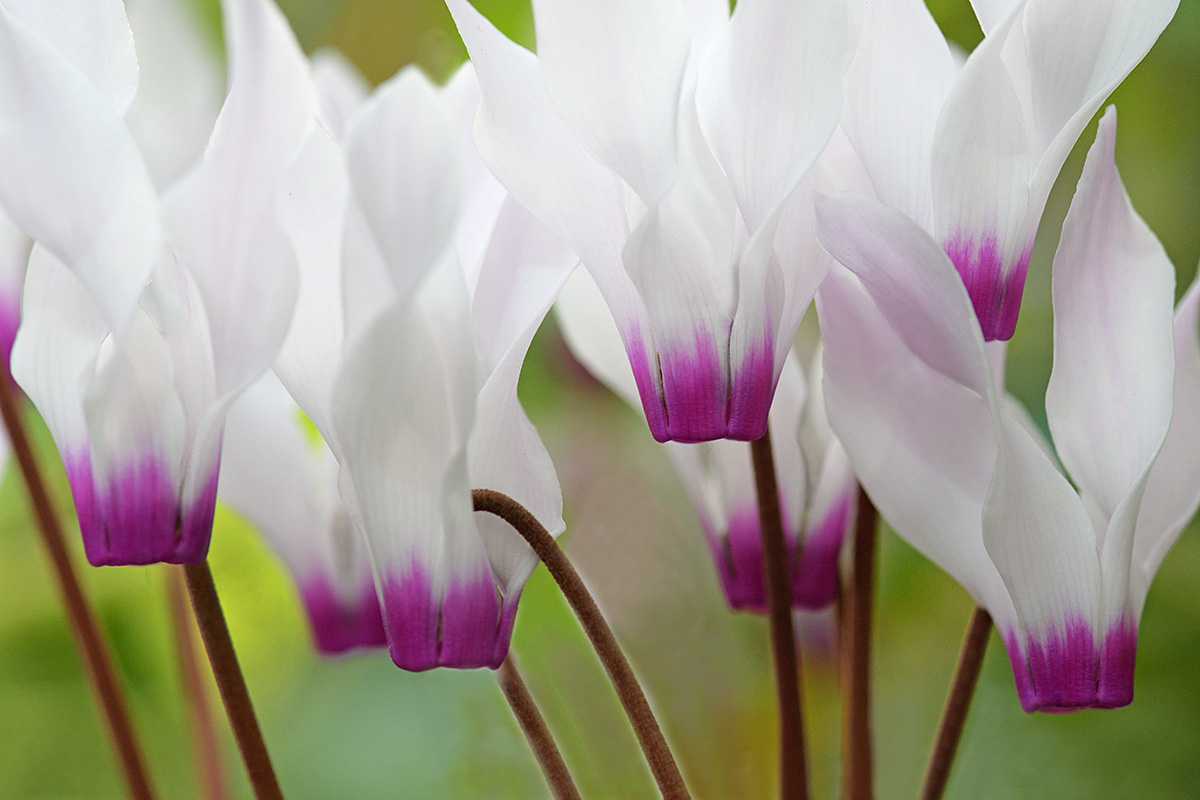Persian cyclamen is a species of flowering herbaceous perennial plant growing from a tuber. It is native to rocky hillsides, shrubland, and woodland, from south-central Turkey to Lebanon, Syria and the Palestine region. It also grows in Algeria and Tunisia and on some Greek islands, where it may have been introduced by monks.
Persian cyclamen reaches heights of about 32 cm. Wild plants have heart-shaped, fleshy leaves, usually green with lighter markings on the upper surface. Flowers bloom from winter to spring and have 5 small sepals and 5 upswept petals, usually white to pale pink with a band of deep pink to magenta at the base. Plants go dormant in summer. The fruits are capsules, which are sunk into the ground with increasing maturity.
Persian Cyclamen was introduced to Western Europe in the 17th century. Cultivars of this this species are very popular with florists. Beautiful nodding blooms come in a variety of colors, including white, pink, red, magenta, or lavender.
The flower stalk rises directly from the dark brown tuber. The tuber is poisonous; it contains toxic saponins. Abnormal cardiac rhythms, seizures, and death can occur if large amounts are ingested.
Today’s photo was captured in a cold house in the botanical garden of the University of Basel.
